Crip News v.206
Disability & Work: What It Costs to Have a Job, new works, new honors, calls, and events.
Disability & Work
This October is the 80th annual National Disability Employment Awareness Month (NDEAM) in the US. To offer some perspective that ‘awareness’ might miss, each issue this month features a section on work, income, and disability. For the previous posts, check out “Sick and Tired” and “Big Picture: Does Work…Work?”
What It Costs to Have a Job
‘Disability employment’ can seem like one thing. But it’s many things. It’s housing. It’s health care. It’s the lead-up to ‘adulting,’ as Samuel Habib and his dad Dan explore in the documentary The Ride Ahead (currently on PBS in the US).
It’s being able to earn income at all.
Millions of disabled people cannot afford to have a job. That’s because harsh income and asset limits on programs like Supplement Security Income (SSI) make it impossible.
For some workers, there’s a predictable amount you can earn before you lose access to essential public benefits. It’s called the benefits cliff. In many job situations, getting a raise leaves you worse off.
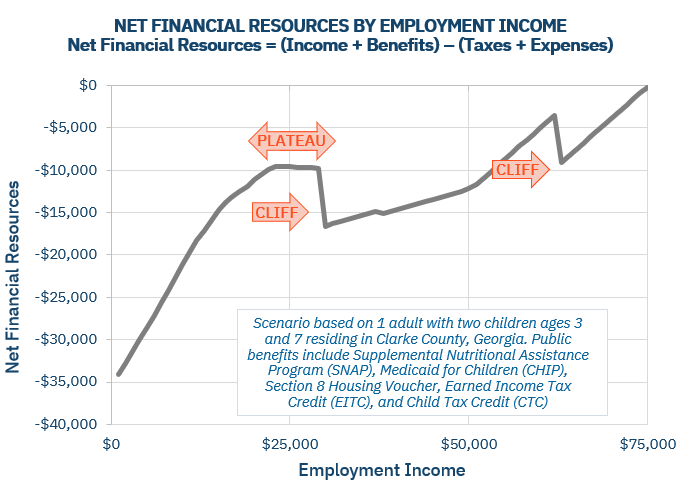
We’re taught in too many ways that our work defines our worth. And yet many people are effectively punished for pursuing a career. How did we get here?
SSI and UBI
Maybe you’ve heard of ‘universal basic income’ (UBI) or guaranteed income (GI). This movement has been driven by decades of Black feminist organizing, especially the National Welfare Rights Organization’s work in the 60s and 70s, working against oppressive restrictions on who can receive welfare. In 2020, hundreds of GI programs emerged across the US to address the acute economic emergencies of the early pandemic.
Unfortunately, the money GI program participants receive today is most often treated as earned income, which means it gets factored into the means testing for many public benefit programs. And most GI programs are temporary. So if you use SSI and want to be part of a GI program, there’s a strong chance you’ll actually be left worse off in the end. First goes SSI, which is also how many disabled people qualify for Medicaid that covers things employer-sponsored health insurance rarely does. Then goes the GI program.
When I started looking into ways to protect GI participants’ benefits, I discovered an important political history: SSI came about through the failure of the last major campaign for a federal basic income. I document this and other interactions between cash policies and disability economic justice in a report I released last year.
In a televised address in 1969, President Richard Nixon unveiled a series of domestic policies he called the Family Assistance Plan. The plan included a guaranteed annual income of $1,500 (about $13,000 today) for a 4-person family and an additional $300 ($2,600 today) per child up to 7 kids.
Some advocates for GI cite this as an example of bi-partisan support for cash policies, sometimes grouping Nixon’s plan in with MLK’s push for GI. But Nixon’s plan was a devil in sheep’s clothing. It was a cornerstone of his racist attacks on so-called ‘welfare dependency’ and it was strategically not universal: it treated single mothers as an afterthought, creating incentives for marriage and using work requirements familiar to us today. In the end, Nixon’s fellow conservatives in the Senate used evidence of benefits cliffs to defeat the bill.
But one element survived: an increase in social security benefits that later became the Supplemental Security Income (SSI) program.
SSI began in 1972 when Congress federalized disability-specific programs mandated in the 1935 Social Security Act that were previously administered through a maze of state and local administrative agencies. The Social Security Administration (SSA) converted over 3 million disabled people’s benefits into the new SSI program and began distributing monthly payments in 1974.
Disability Employment Isn’t Really About Jobs
Getting on SSI is complicated and laborious. To be eligible, you have to prove you’re disabled, poor, and documented in terms of citizenship. You can’t leave the U.S. for more than 30 consecutive days. You have to let SSA monitor your financial records.
The maximum monthly SSI payment in 2025 is $967 for an individual and $1,450 for a couple. The average payment in January 2024 was $698.
But the most an SSI recipient can earn in a month is $2,019 (and amounts under that reduce the SSI payment) and they can’t own more than $2,000 in assets or savings. These limits haven’t been updated since 1989.
As a result, SSI recipients experience barriers to moving (given the cost of renters’ security deposits, first and last months of rent, and moving costs). SSI effectively bars marriage equality for disabled people, as the Emmy-winning documentary Patrice: The Movie explains. SSI recipients can’t even set up a GoFundMe to get the funds they might need to fix an accessible vehicle or their home.
How can we even really begin to talk about employment when these are the daily realities for the 7.4 million disabled people on SSI?
SSI is explicitly framed as a program “of last resort.” This means eligibility depends on proof that someone has no other form of support. And this is why SSI is a trap, why it exacerbates disabilities, and why it makes it impossible to get a job.
And this is why, when we talk about disability employment, it’s important to pause and consider the larger frame, especially as the Trump administration is working on plans that could significantly reduce access to SSI. Who are we already sorting in or out of the conversation when we think about employment in terms of jobs alone?
NEWS
New Works
The newly formed Disabled Scholars of Color Collective recently published a white paper on “The State of Critical Race Disability Studies,” concluding with 6 dreams for the future of the Collective and their work.
On a recent episode of RadioLab about voice, Alice Wong talks about the dignity of silence, reckons with feeling the world in new ways, and sets the show’s producers on the path to discovering the legacy of disabled inventor David Muir behind the Passy-Muir tracheostomy speaking valve.
New research from the University of Southern California Annenberg Inclusion Initiative looked at the 100 top-grossing narrative films theatrically released in North America in 2024 and found that only 2.4% of all speaking characters were depicted with a disability. Of these, 61% were male and 71% were white.
An essay published in World Records Journal, “At the Center of a Thing You’re Absent From” by Emma Ben Ayoun, considers Jordan Lord’s 2024 film An All-Around Feel Good as a piece of “disability media,” with the filmmaker’s commentary woven into the text.
New Honors
The New England Foundation for the Arts recently awarded Vanessa Hernández Cruz’s Echoing Memories in a Distant Future a 2025 National Dance Project Production Grant.
The National Center for Choreography-Akron recently announced that Kinetic Light’s Alice Sheppard and Laurel Lawson are the recipients of the 2025 Knight Choreography Prize.
Disability Culture Lab recently announced the first cohort of the Disability Rising Fellowship. The 10 disabled leaders - Dr. KáLyn “Kay” Coghill, India Harville, Janiah Miller, Jilisa Milton, Rachel A. R. Porter, Mustafa Rfat, Daniel Romero-Guerrero, Dennis Tran, Jaz Williams, and Jasmine Williams-Jacobs - will receive funding, media training, and other support.
CALLS
SICK, “a thoughtful magazine by sick & disabled people,” is accepting applications for its 7th issue. Submit by Oct. 31.
The Craft Emergency Relief Fund (CERF+) is accepting applications for its Artist Get Ready Grants “providing craft artists with grants up to $1,000 for activities to safeguard their studios, protect their practices, and prepare for emergencies.” Apply by Nov. 11.
The Fiddlehead is accepting pitches for fiction, creative nonfiction, poetry, and reviews for a Summer 2026 issue called “Disability: The Revolution!” Submit by Nov. 30.
Drs. Alexandra F. Morris (Independent Scholar) and Tobias Teutenberg (Bibliotheca Hertziana – Max Planck Institute for Art History, Rome) are seeking paper proposals for a session of the 2026 Association for Art History Annual Meeting on “The History of Museum Access.” Submit by Nov. 2.
EVENTS
6th Annual Creating Community Symposium
Oct. 20 - 23, in-person in Philadelphia with livestreamed keynotes
The Creating Community Symposium will bring together artists and professionals from progressive art studios across the United States and beyond to discuss best practices, advocacy, and the evolving landscape of art and disability. This annual event, founded by Creative Growth in Oakland, CA, aims to foster dialogue and collaboration around the importance of inclusive creative spaces for artists with intellectual and developmental disabilities.Moving through the Intersections: Latinx Disabled Artists in Focus
Thursday, Oct. 23, 5pm PT/8pm ET, on Zoom
As a part of the on-going “Let’s Talk About It” community dialogues, David Herrera Performance Company’s Latinx Hispanic Dancers United initiative presents a national roundtable centering and celebrating Latinx Dance Artists with Disabilities. In this conversation, moderated by Mark Travis Rivera, we will hear directly from artists Vanessa Cruz, JanpiStar, and Kayla Maria G., who are making their mark in the professional U.S. dance field.CripTech AI Lab Work-in-Progress Presentations
Friday, Oct. 24, 9 - 11am PT, on Zoom
Join us for this showcase of the CripTech AI Lab, where our cohort will debut groundbreaking projects at the intersection of disability, art, and AI. This special event will feature works-in-progress, followed by a discussion with a panel of invited experts –a rare behind-the-scenes look at how these ideas are shaping new possibilities for art, access, and technology. This event is a precursor to a full virtual exhibition of the cohort’s work, set to launch towards the end of this year—please stay tuned for more details!Action for Access: Envisioning an Accessible NYC & NYS
Wednesday, Oct. 22, 5:30 - 8:30pm, in-person at CUNY School of Law (NYC) and on Zoom
Join us for an empowering evening of connection and action as we envision a more inclusive and accessible New York City. This hybrid event will center disabled voices in civic engagement, provide key resources on voting access, and build momentum toward the 2026 election. Come network, make your voting plan, and take collective action for change.The Third Annual Visual AIDS Research Symposium
Friday, Oct. 24, 2 – 6:30pm, in-person at MoMA (NYC) and on Zoom
This symposium celebrates the lives and legacies of artists documented in the Visual AIDS Archive, the largest collection of images and biographical information about HIV-positive artists. The third iteration of this annual event will open with presentations by Visual AIDS Research Fellows who will introduce the lives and work of three underrecognized artists who died of AIDS-related causes: Frank Green (1957–2013), Miss Kitty Litter (1962–1995), and Sergio Hernandez Frances* (1964–1995).


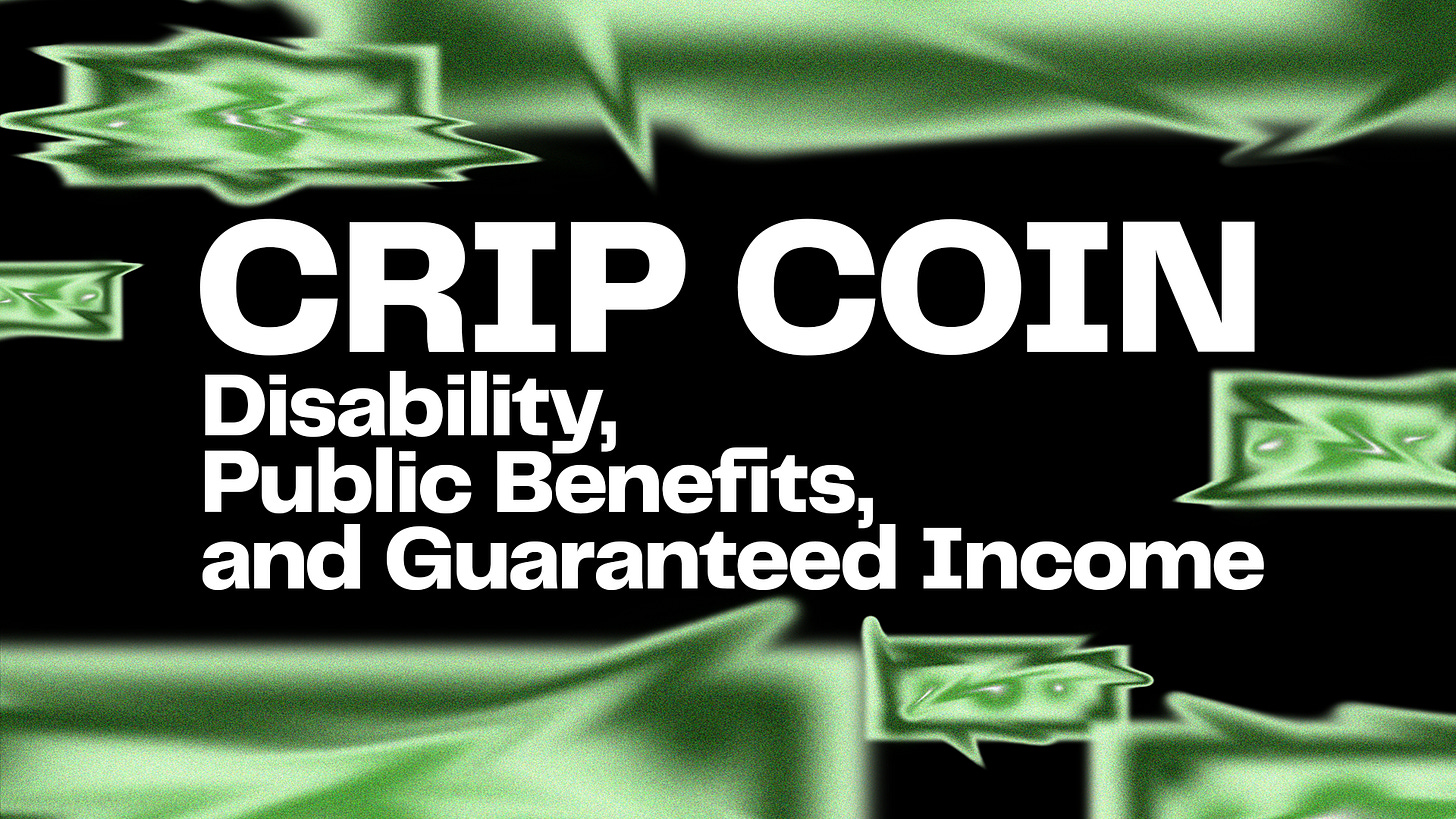
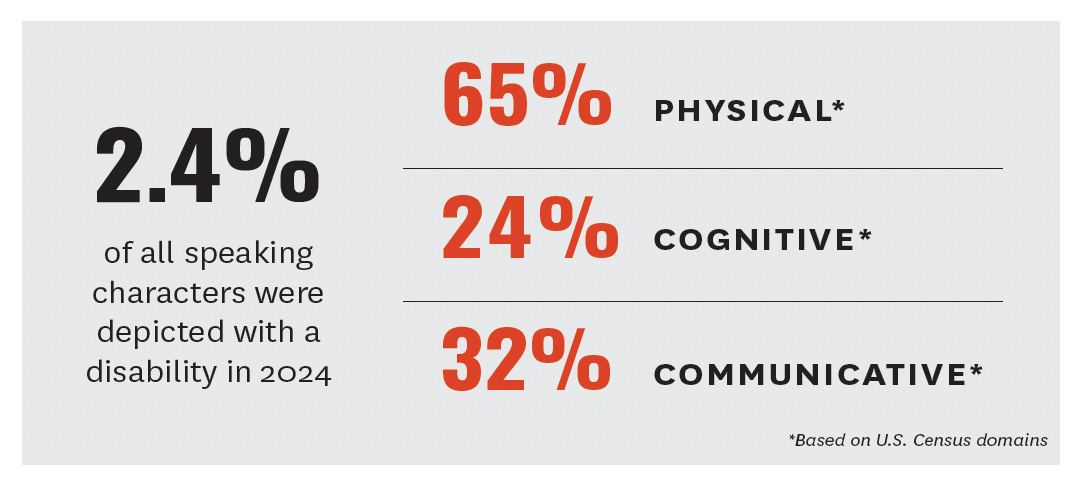
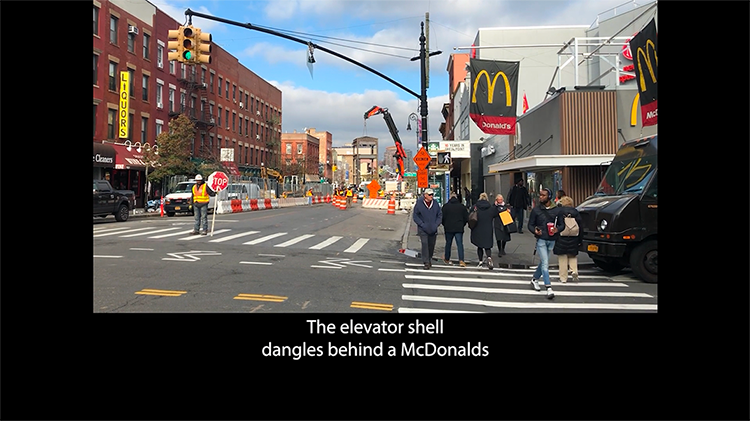
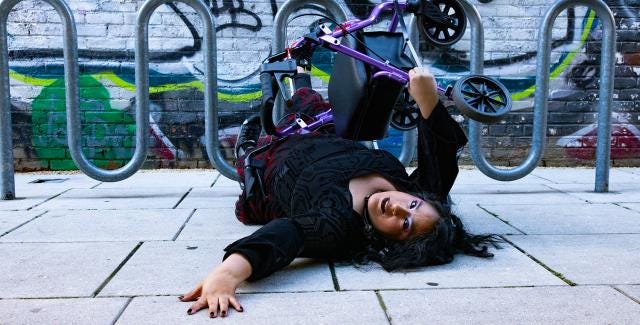
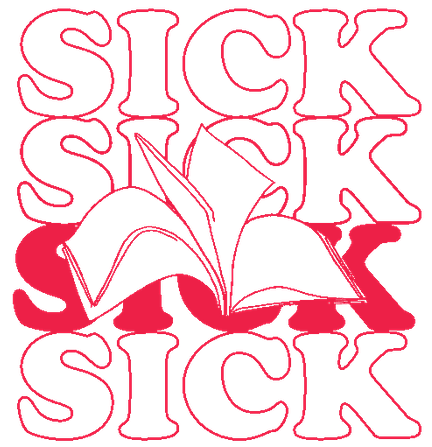
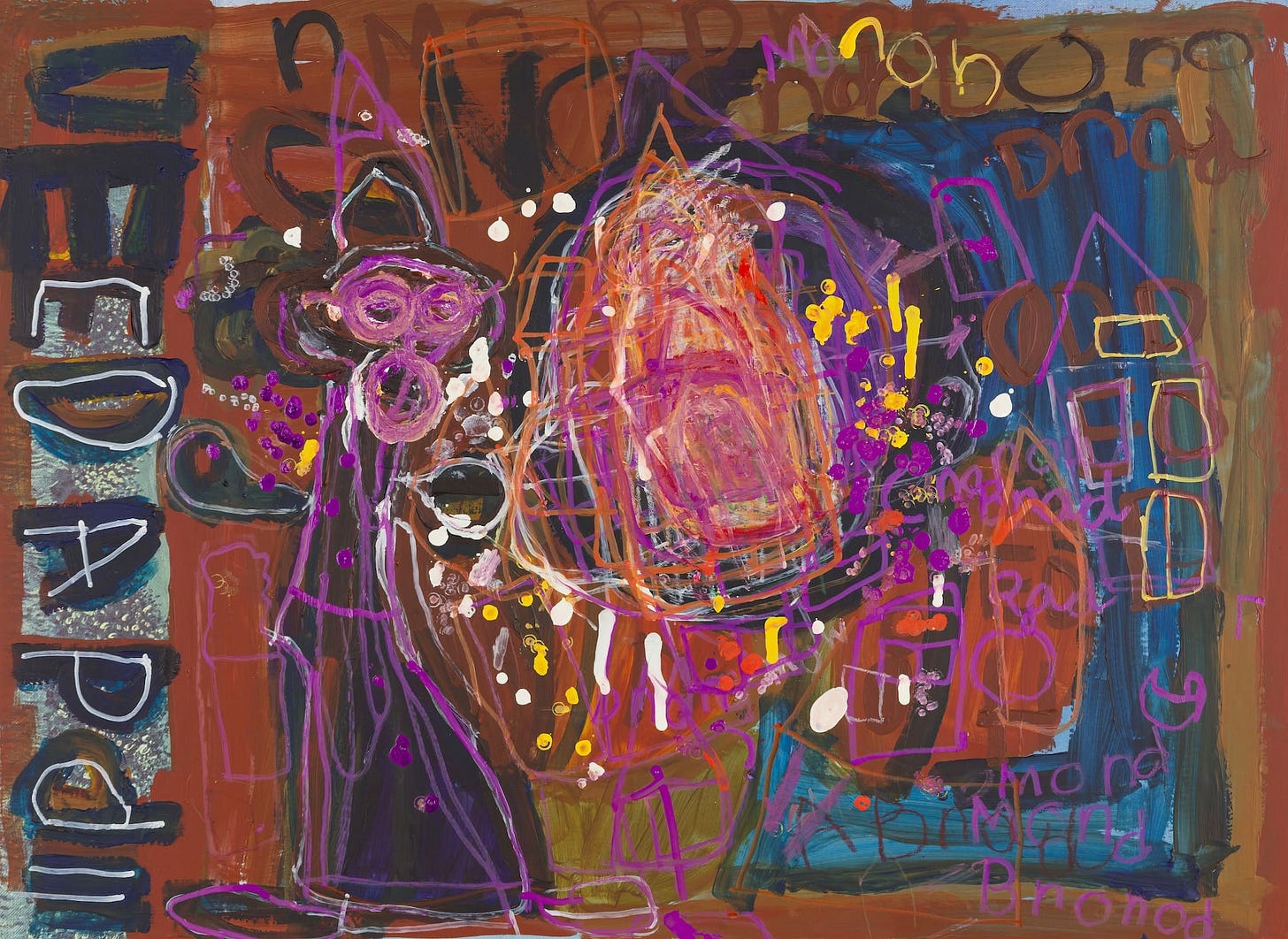
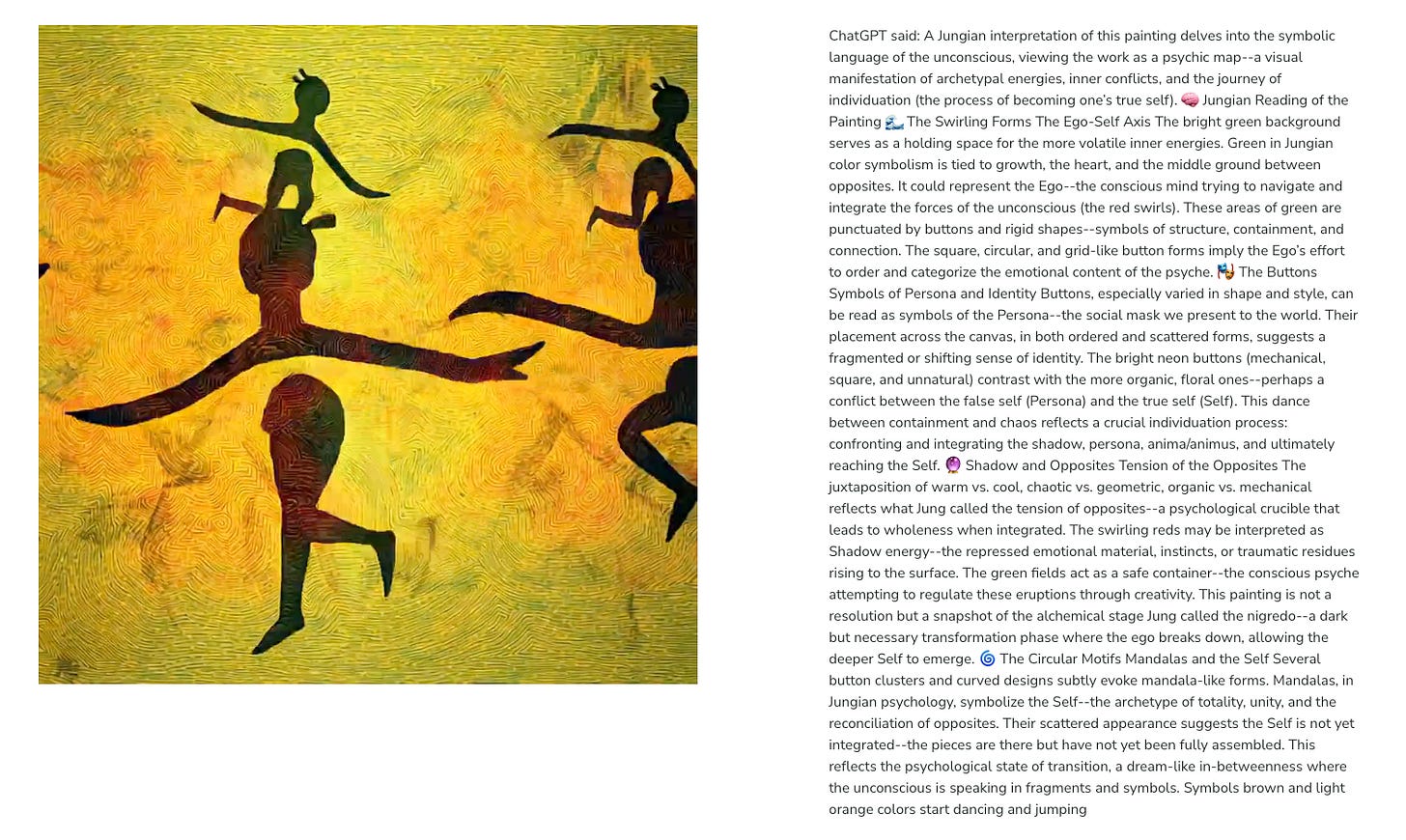
Why aren’t more people subscribed to this platform? It’s obvious much work goes into each issue. Or are there other outlets where more are involved?